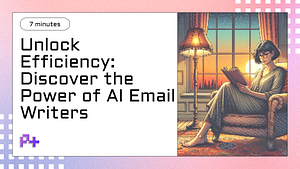Understanding the Pomodoro Technique
The Pomodoro Technique is a time management method developed by Francesco Cirillo in the late 1980s. The core idea behind this technique is to break work into intervals, traditionally 25 minutes in length, separated by short breaks. These intervals are known as Pomodoros, named after the Italian word for tomato, inspired by the tomato-shaped kitchen timer Cirillo used as a university student. The technique aims to enhance focus and productivity by encouraging deep work during these timed sessions and providing regular breaks to recharge the brain.
Implementing the Pomodoro Technique is straightforward and can be adapted to various work styles. To start, choose a task you want to work on, set a timer for 25 minutes, and immerse yourself in that task until the timer rings. Once the Pomodoro is complete, take a short break of about 5 minutes to step away from your work, stretch, or engage in a different activity. After completing four Pomodoros, take a longer break of 15 to 30 minutes. This structured approach not only helps maintain concentration but also combats mental fatigue, leading to improved efficiency in both personal and professional tasks.
The benefits of the Pomodoro Technique extend beyond just time management; it fosters a greater awareness of how time is spent and encourages the completion of tasks in a less stressful manner. Many users report increased motivation as they can visually track their progress through completed Pomodoros. Additionally, the regular breaks incorporated into the technique help reduce burnout, making it an effective strategy for maintaining long-term productivity. By understanding and applying the principles of the Pomodoro Technique, individuals can transform their work habits, achieve their goals more effectively, and cultivate a more balanced approach to their daily tasks.
How to Effectively Use the Pomodoro Timer
The Pomodoro technique is a time management method that enhances productivity by encouraging focused work sessions followed by short breaks. To effectively use the Pomodoro timer, begin by selecting a task you want to work on. This could be anything from studying for an exam to completing a project at work. Set your Pomodoro timer for 25 minutes, which is the standard duration for a Pomodoro session. During this time, commit to working solely on your chosen task, eliminating all distractions. This focused approach not only helps you maintain concentration but also makes the work seem less daunting, as it’s broken down into manageable intervals.
Once your 25 minutes of focused work is up, take a short break of about 5 minutes. Use this time to step away from your desk, stretch, or grab a drink. This short break is essential because it allows your brain to rest and recharge, ultimately improving your overall productivity. After completing four Pomodoros, or work sessions, take a longer break of 15 to 30 minutes. This longer break helps prevent burnout and keeps your mind fresh for the next round of tasks. Incorporating these breaks is a key element of the Pomodoro technique and can significantly enhance your efficiency throughout the day.
To maximize the benefits of the Pomodoro timer, consider using a digital timer or an app specifically designed for this technique. Many apps come with additional features such as task tracking and analytics, which can help you identify patterns in your productivity. Additionally, keep a log of your Pomodoros to monitor your progress and stay motivated. By consistently applying the Pomodoro method, you’ll not only improve your time management skills but also cultivate a more focused and productive work environment. Embrace the Pomodoro technique, and watch as your productivity soars!
Key Features of Pomofocus: Free vs. Premium
Pomofocus is a versatile timer app designed to enhance productivity using the Pomodoro Technique, which encourages users to work in focused intervals followed by short breaks. When comparing the free and premium versions of Pomofocus, it’s essential to understand the key features that distinguish them. The free version provides a solid foundation with essential tools, such as customizable timer settings, session tracking, and a simple interface that makes it easy for users to get started. This version is ideal for those who are new to the Pomodoro Technique or who prefer a straightforward approach to time management without the need for advanced features.
In contrast, the premium version of Pomofocus unlocks a suite of advanced functionalities that significantly enhance the user experience. Premium users gain access to features like detailed analytics, which allow for in-depth tracking of productivity patterns over time. This data can be invaluable for users looking to optimize their work habits. Additionally, the premium version offers the ability to set personalized goals and reminders, allowing users to tailor their Pomodoro sessions to their specific needs. This heightened level of customization is particularly beneficial for professionals who juggle multiple tasks and require a more structured approach to time management.
Ultimately, deciding between the free and premium versions of Pomofocus depends on individual productivity needs. While the free version is a great starting point for casual users or those testing the waters of the Pomodoro Technique, the premium offering is well-suited for dedicated individuals seeking to maximize their productivity. With its enhanced features, the premium version not only provides a more comprehensive understanding of work habits but also fosters a more disciplined approach to time management, making it a worthwhile investment for serious productivity enthusiasts.
Tips for Maximizing Productivity with Pomodoros
To maximize productivity using the Pomodoro technique, it’s essential to create a conducive work environment. Start by minimizing distractions; keep your workspace tidy and limit notifications from digital devices. Designate specific times for checking emails and messages, which helps maintain focus during your Pomodoro sessions. Consider using apps or tools that are designed to track your Pomodoros, as they can provide visual cues and reminders, reinforcing the habit. Additionally, ensure that your workspace is comfortable and well-lit, as a positive environment can significantly enhance your concentration and output.
Another key aspect of maximizing productivity with Pomodoros is planning your tasks effectively. Before beginning your Pomodoro sessions, list out the tasks you want to accomplish and estimate how many Pomodoros each will require. This not only gives you a clear roadmap but also helps in setting realistic goals. Break larger tasks into smaller, manageable chunks to avoid feeling overwhelmed. By structuring your work in this way, you can maintain your momentum and make steady progress, which is vital for sustaining motivation throughout the day.
Finally, don’t underestimate the importance of the breaks that follow each Pomodoro. These short breaks are crucial for resetting your mind and preventing burnout. Use this time to stretch, hydrate, or take a brief walk—activities that can enhance your physical and mental well-being. Ideally, after every four Pomodoros, take a longer break of 15-30 minutes to recharge fully. This balance of work and rest not only boosts your productivity but also improves overall job satisfaction, making your Pomodoro sessions more enjoyable and effective. By implementing these tips, you can harness the full potential of the Pomodoro technique and achieve your goals with greater efficiency.
Additional Resources for Enhanced Focus and Productivity
To enhance your focus and productivity while using the Pomodoro Technique, it's beneficial to explore a variety of additional resources designed to complement and optimize this time management method. First and foremost, consider utilizing productivity apps specifically tailored to the Pomodoro Technique. Applications like Focus Booster, Pomodone, and Forest not only help you track your work intervals but also provide analytics on your productivity patterns. These insights can guide you in adjusting your working habits for improved efficiency. Furthermore, many of these apps offer customizable features, allowing you to set specific goals and reminders, which can significantly bolster your ability to concentrate.
In addition to digital tools, incorporating physical resources can further enhance your productivity. Books such as The Pomodoro Technique by Francesco Cirillo provide an in-depth understanding of the method's principles, offering practical tips and strategies for implementation. Moreover, joining online communities or forums focused on productivity can foster a sense of accountability and shared learning. Engaging with others who are also using the Pomodoro Technique can lead to valuable exchanges of ideas, tips, and personal experiences, enriching your own practice and keeping you motivated.
Lastly, consider integrating mindfulness and meditation practices into your routine. Studies have shown that mindfulness can significantly improve focus and mental clarity, which are essential for maximizing the effectiveness of the Pomodoro Technique. Resources such as guided meditation apps, like Headspace or Calm, can help you cultivate a more centered and focused mindset, making your work intervals more productive. By combining the Pomodoro Technique with these additional resources, you can create a comprehensive productivity strategy that not only enhances your focus but also promotes a healthier work-life balance.


